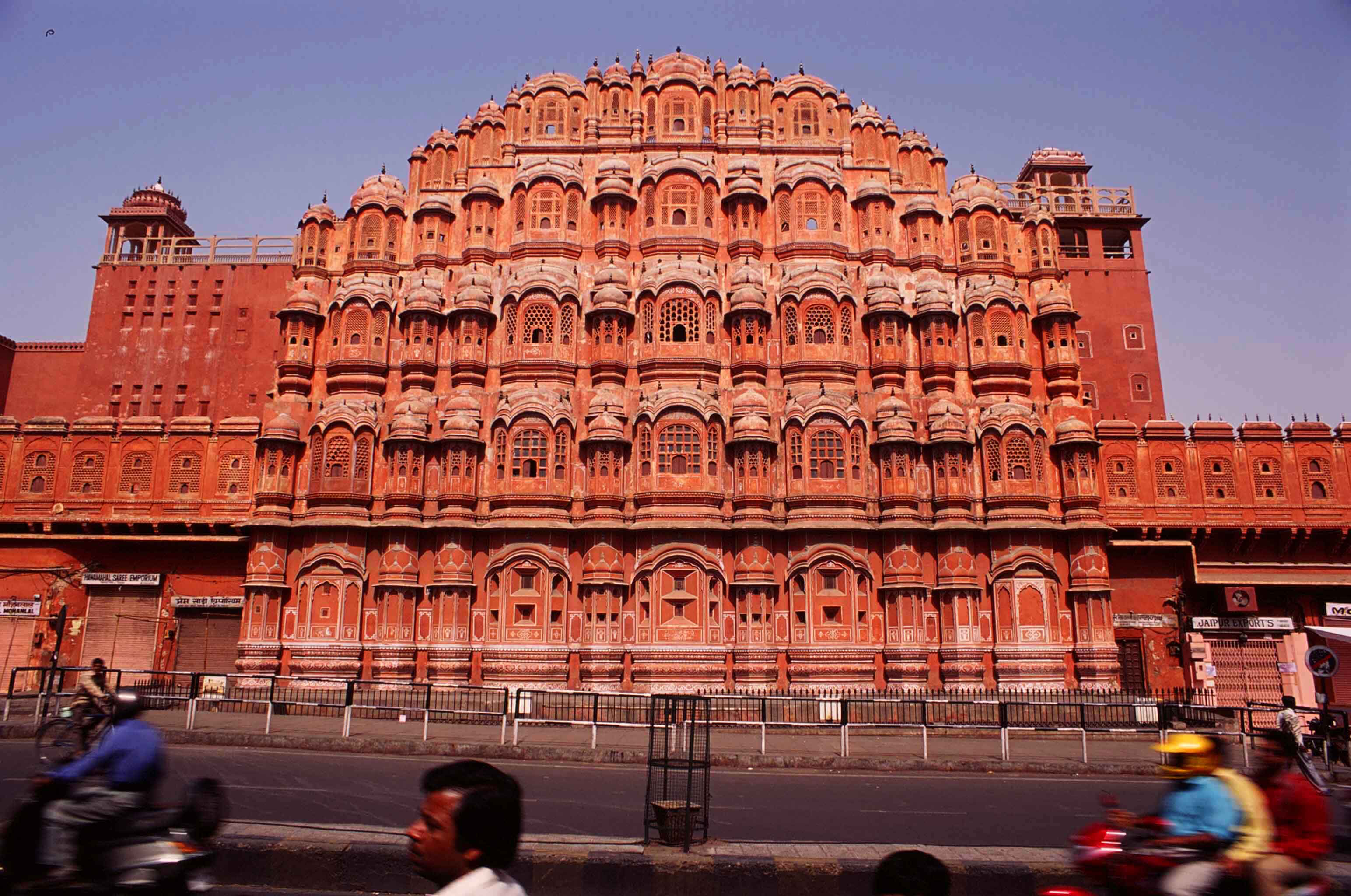

Jaipur attractions fall into three particular territories. At the heart of the urban sprawl, the historic Pink City is where you’ll discover the luxurious City Palace and the Hawa Mahal alongside the bazaars loaded down with luring Rajasthani traditional arts and handicrafts.
A flamboyant exhibit of Rajasthani architecture, the city of Jaipur has been bewitching the backpackers in India as well as overseas for long, as it is the third destination of India’s “Golden Triangle“. At the heart of Jaipur exists the Pink City, the old fortified place, whose bazaar, still rank among the most energetic ones in Asia, famous for their materials and gems. The much leafier and less chaotic area south of the Pink City is home to Central Museum and Ram Niwas Gardens, while the city’s outskirts are specked with a string of charming relics of illustrious rulers of the past, most prominently Nahargarh Fort, the temples of Galta, and the cenotaphs at Royal Gaitor.
|
|
|
Today, with a populace of more than three million, Jaipur is the state’s most developed commercial and business hub and it is the most prosperous city; even a few assessments put it among the world’s 25 quickest developing urban spaces, with a yearly populace development of around 4 percent, and sparkling new tall structures and buildings springing up on a week after week basis. Be that as it may, before the city got to be one of the chief focuses of trade, education, and tourism, it was the spot where the mighty Rajas and Maharajas ruled. The year 1727 saw the establishment of Jaipur and today it is one of Rajasthan’s most youthful urban areas, established by Jai Singh II of the Kachhwaha dynasty, who conquered and ruled a sizeable part of northern Rajasthan with their seat being present at adjacent Amber. The Kachhwaha Rajputs had been the first to partner themselves with the Mughals, in 1561, and, when of Jai Singh’s came into power, the free stream of workmanship, trade, and thoughts had made them a extraordinary thriving place. The productive 43-year rule of Jai Singh, was trailed by an unavoidable fight for progression, and the state fell into turmoil. Quite a bit of its region was lost to Jats and Marathas followed by British, who immediately moved into exploit Rajput infighting.
One prominent place that one can’t bear to miss is the Albert Hall. To the south of the Pink City, the wide road driving out from New Gate is flanked by the shockingly lavish Ram Niwas Gardens, named after their maker, Maharaja Ram Singh. Standing sentinel in amongst these patio nurseries is the city’s colorful Albert Hall, a conspicuous city historic point. It was built in 1867, and shows an offbeat blend of Venetian and Mughal styles of refined architecture, and today houses the city’s Central Museum. The greater part of the archives concentrates on provincial and Indian topics, including fine exhibition of Jaipur stoneware, Hindu statuary and miniature paintings of the Mughal and Rajasthani rulers, backed-up by a varied exhibit of relics from around the world – everything from Egyptian ancient pieces to brightening tiles from Stoke-on-Trent.
The year 2020 and the pandemic threw a wrench into everyone's plans. Companies that were…
AI is successful in boosting the productivity of organizations while helping them save cost and…
Suppose you battle back discomfort or other associated ailments due to sitting for lengthy periods…
In November 2023, investor Maksym Krippa acquired the Parus Business Center, redefining the commercial real…
Programmers create computer programs, mobile solutions and also analyse the needs of their clients and…
A trip to Santiago is sure to be memorable by default as simply seeing this…